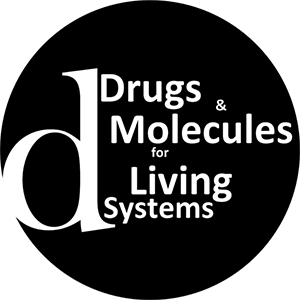EFFlux pump inhibitors to Overcome antibiotic ResisTance - EFFORT project



Collaborators :
- Dr Ruben Hartkoorn, CIIL, Institut Pasteur Lille (French Coordinator)
- Pr Klaas Martinus Pos, Institute of Biochemistry, Goethe-University, Frankfurt, Germany (German Coordinator)
- Pr Achilleas Frangakis, Institute of Biophysics, Goethe-University, Frankfurt, Germany
- Dr Attilio Vargiu, Physics Department, University of Cagliari, Italy
Team :
- Team Leader: Dr Marion Flipo – Assistant Professor
- Dr Anaïs Vieira-Da-Cruz – Postdoc
- Nina Compagne – PhD student
- Nicolas Willand – Professor
Project :
The discovery of novel classes of antibiotics for Enterobacteriaceae, A. baumannii and P. aeruginosa (the most critically classed pathogens on the WHO priority list), is particularly obstructed by their efficient and promiscuous xenobiotic efflux pumps that prevent the efficacy of new chemical entities. The upregulation of these pumps in clinical strains also results in resistance to current antibiotics. It is therefore clear that developing inhibitors to these efflux systems, as well as enriching our knowledge of the basic biology of these pumps will be a major step forward in breaking the xenobiotic defence system of these bacteria.
Efflux pump inhibitors (EPIs) previously discovered have thus far not been developed into clinical candidates but have greatly helped understand the mechanism by which the pumps work, and proven the druggability of these targets. It is clear that strengthening and expanding this basic knowledge on efflux pumps to bacteria such as A. baumannii is fundamental and synergistic to the development of novel EPIs to help fight Gram-negative infections. Through a fragment-screening we have identified a small water soluble compound able to boost the activity of a broad spectrum of AcrAB-TolC efflux pump substrates in both E. coli and K. pneumoniae.
The EFFORT consortium will aim to pinpoint the binding pocket of the new EPI in E. coli, K. pneumoniae and A. baumannii, and investigate its ability to act as a chemical scaffold for inhibiting other efflux pumps in A. baumannii and P. aeruginosa (such as silent efflux pumps). This whole effort will be supported by structural studies to define the exact binding position of the inhibitors in E. coli AcrB, in K. pneumoniae AcrB and in the to be uncovered A. baumannii efflux pump. The structural biology will be supported by both X-ray crystallography and state-of-the-art Cryo-EM imaging that will maximise the likelihood of enriching out knowledge in efflux pump biology and EPIs. The size and chemical properties of the novel EPI make it very accommodating for easy chemical diversification, rationally guided by structural biology data, molecular dynamics simulations and biological activities, that will aim to improve the potency of the EPI. The physico-chemical and pharmacokinetic properties of the compounds will also be monitored to rapidly identify optimized molecules ready to be tested for in vivo efficacy. Overall EFFORT will both enlighten the basic structural biology of efflux pumps in Gram-negative bacteria by state of the art techniques, and develop a promising EPI.



